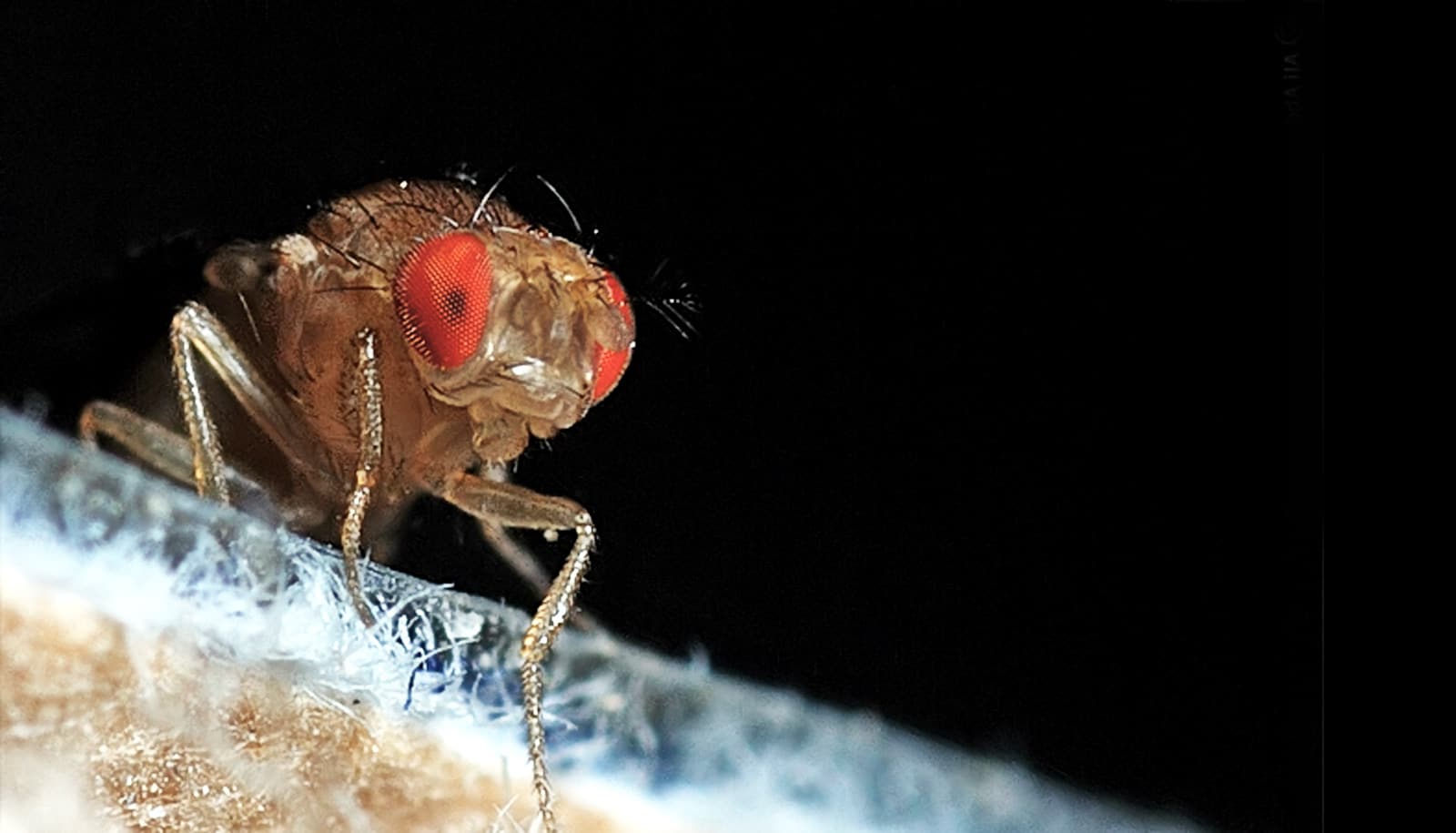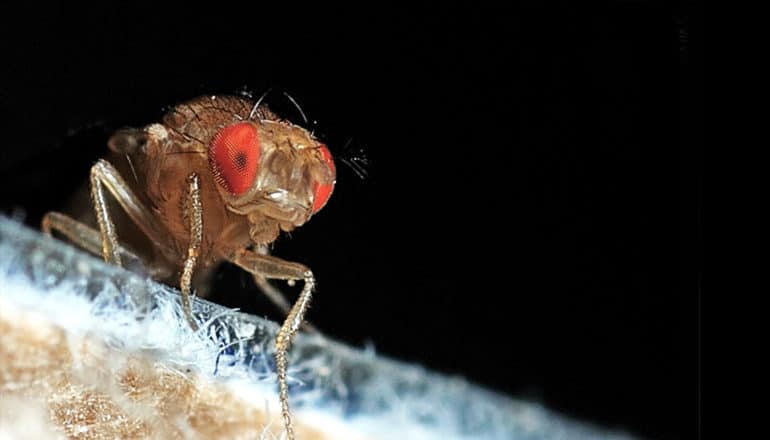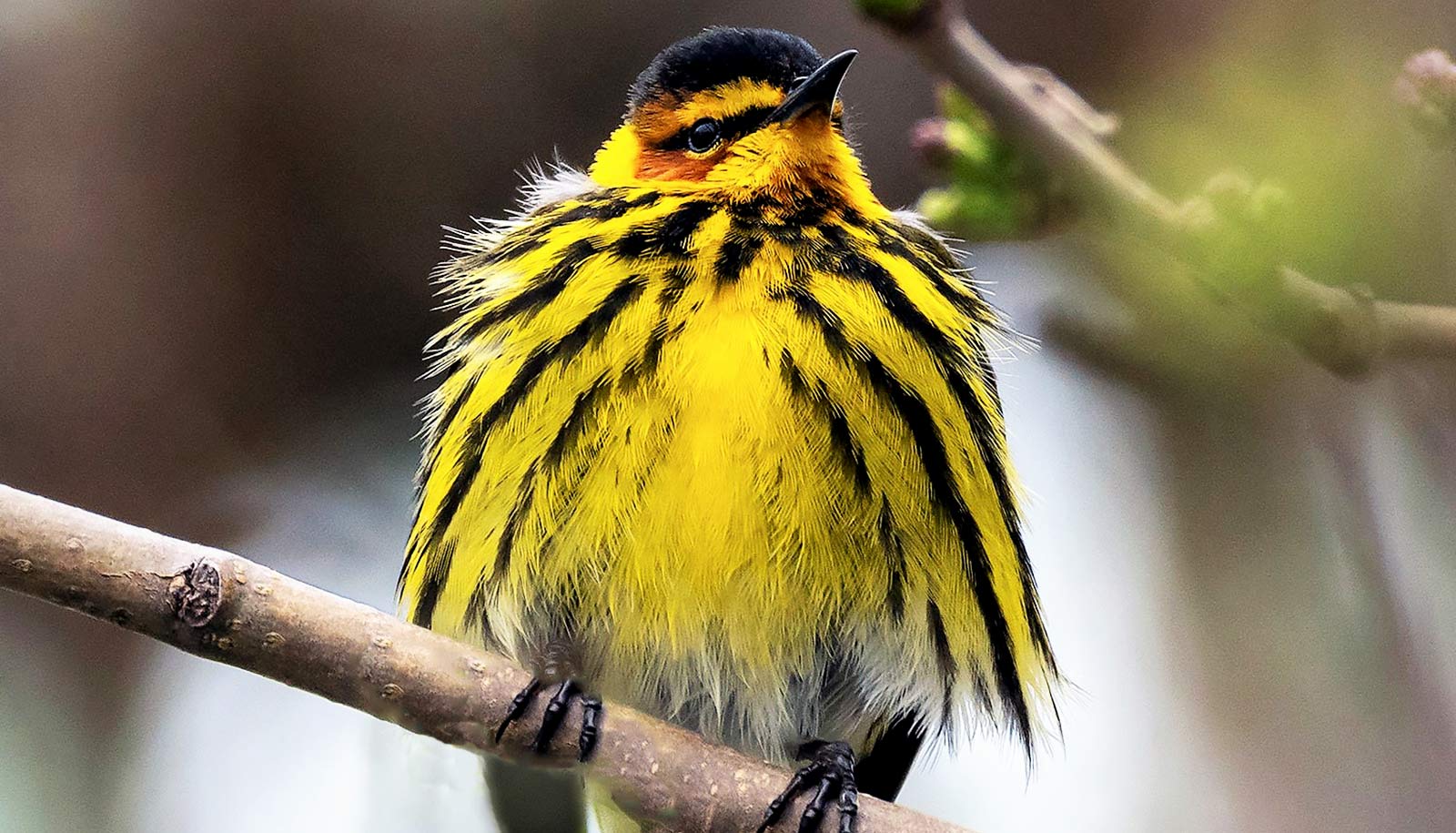
(Credit: Ali/Flickr )
How being yellow messes up fruit fly sex lives
A single genetic mutation both turns male fruit flies yellow and keeps them from mating effectively. How is that possible? Sex combs.

New research explains how a single gene mutation can alter both the color of a fruit fly’s body and mess up its sex life.
Studies performed in the laboratory of Thomas Hunt Morgan more than a century ago were the first to demonstrate that some behaviors have a genetic basis. Those fruit fly experiments also provided an early example of pleiotropy, a phenomenon in which a single gene has the ability to influence multiple traits.
In the decades that followed, scientists have been unable to satisfactorily explain how a single genetic mutation was able to change a male fruit fly’s body color from brown to yellow and at the same time affect mating behavior. Some researchers suggested the mutation caused brain changes that interfered with mating.
It’s the sex combs
But in a study in the journal eLife, University of Michigan biologists show that the solution to the yellow fly mystery is not in the insect’s tiny brain. Instead, it has to do with changes in the morphology of specialized leg structures called sex combs.
“…it’s all about melanin’s effect on the comb’s ability to grab the females.”
The researchers used a series of genetic screens and high-speed video recordings of mating to demonstrate that male yellow flies lacking pigments in sex combs were unable to grasp females for mounting and copulation following courtship. The findings explain why yellow flies mate poorly and also reveal why fruit flies possess sex combs, which are modified bristles on the front legs with previously unknown function.
Pest control possibilities
In addition, the study’s results could eventually have applications in the pest-control industry and in public health, according to study first author Jonathan Massey, who did the work as part of his doctoral dissertation in the department of ecology and evolutionary biology.
“We aimed to solve the yellow fly mystery because the answer would help better explain how genes controlling animal morphology could also influence animal behavior,” says Massey, who is now a postdoctoral research fellow at Harvard Medical School and Boston Children’s Hospital.
“If, for example, pest managers have a clearer understanding of how individual mutations cause critical disruptions in mating success, they could develop targeted strategies to block reproduction in species that transmit disease or destroy crops.”
Mystery solved
In insects, pigments are synthesized from the chemical dopamine, which is best known as a neurotransmitter used in animal brains to send messages between nerve cells. Because of the dopamine connection, yellow fruit flies were hypothesized to have altered levels of the neurotransmitter in their brains, causing them to mate abnormally.
But Massey and his colleagues were able to show that dopamine’s role in pigment synthesis, not its job as a neurotransmitter, was to blame for the observed mating problems. Yellow mutants lack the pigment melanin, which in fruit flies is also responsible for stiffening various body parts, including the sex combs.
Without melanin, perhaps the sex combs lacked the stiffness needed to grasp the female abdomen when attempting to mount and copulate, the researchers hypothesized. To test this idea, Massey and his colleagues used scanning electron microscopy to examine the sex combs of male mutants and observed structural changes that included a crack in one of the comb teeth.

“We performed many complementary experiments confirming that it’s all about melanin’s effect on the comb’s ability to grab the females,” Massey says. “By solving the yellow fly mystery, we were able to show how a gene that changes the pigmentation of an insect can simultaneously be critical for its mating behavior.”
Other recent studies have also shown the importance of body-part morphology for critical behaviors in various organisms: schooling in stickleback fish, walking in water striders, and singing in crickets.
“These observations all underscore that behavior cannot be understood by studying the nervous system alone; anatomy and behavior function and evolve as an interconnected system,” Massey and his colleagues write.
Funding for the study came from the department of ecology and evolutionary biology, the Peter Olaus Okkelberg Research Award, a National Institutes of Health training grant, and a Howard Hughes Medical Institute Janelia Graduate Research Fellowship. Massey’s advisor, Patricia Wittkopp, is a senior author on the eLife paper and a senior editor at eLife.
Source: University of Michigan
The post How being yellow messes up fruit fly sex lives appeared first on Futurity.
Share this article:
This article uses material from the Futurity article, and is licenced under a CC BY-SA 4.0 International License. Images, videos and audio are available under their respective licenses.
Related Articles:
Why animals’ bright colors can be warning or seduction
Oct. 19, 2022 • futurityWhy so many colorful little warblers? These 2 genes
Nov. 30, 2020 • futurityLinks/images:
- https://www.futurity.org/fruit-fly-quiz-1650242-2/
- https://doi.org/10.7554/eLife.49388
- https://www.futurity.org/leopards-spots-melanin-962132/
- https://news.umich.edu/researchers-solve-long-standing-puzzle-about-link-between-genetic-mutations-mating-behavior-in-fruit-flies/
- https://www.futurity.org/sex-combs-fruit-flies-gene-mutation-2185772-2/
- https://www.futurity.org


